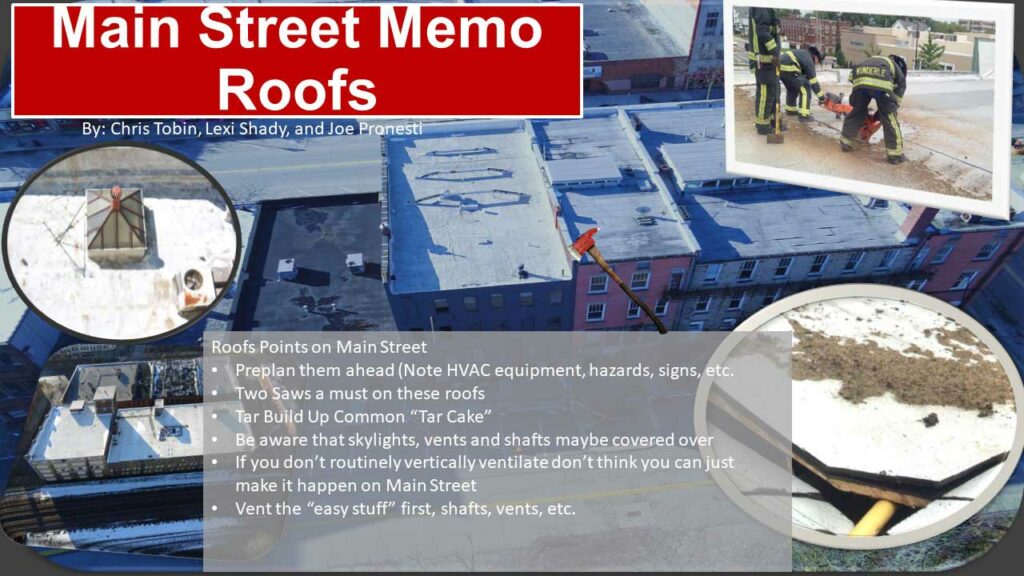
By Joe Pronesti, Chris Tobin, and Alexis Shady
It’s 0400 hours you and a fellow firefighter have raised the aerial to the roof of a three-story legacy building built in 1895, the incident commander has ordered you to “vent the roof.” There is a serious fire somewhere in the building as heavy smoke is belching through every opening.
You and your partner have brought up a saw, pike pole, and ax. You begin to start the saw and after a few pulls you get it running. Smoke is coming out of all the vents and sewer stack pipes on the roof. A decision is made where to cut and all you can think is that the hole has to be 4 x 4 feet because that’s what the instructor told you in the classroom at your firefighter training academy five years ago.
You plunged the blade of the rotary saw into the roof and it feels as if you are cutting into a thick pile of goo. The saw is sputtering and seems to be stuck but it’s dark, smoky, and you only have your turnout gear right angle light for illumination. The chief is barking about getting the hole cut, crews are trying to search the apartments below, and things aren’t getting better.
Command then calls for an evacuation. You shut off the saw, have lost the ax and pike pole in the smoke, and you and your partner head for the parapet and down to the street you go via the aerial.
As you are sitting in the street two hours later, eating a sandwich made by members of your community who have now all come downtown to witness the big event, watching mutual aid aerials flowing water onto two iconic buildings you’ve passed by all your life, you ask your partner why the roof was so hard to cut. You wonder at how difficult everything was compared to the big city videos and fire academy PowerPoint you viewed on vertical ventilation, which seemed so easy.
Today’s Main Street Memo focuses on roofs and how important it is to preplan and understand that these roofs may have up to five layers of tar over the original roof platform built 100 plus years ago. Some other items to consider are:
a. Shafts, their locations, whether they are covered, etc.
b. Skylights, whether they are covered over, covered under, etc.
c. Bulkhead doors.
d. Signs.
e. HVAC equipment. Remember these are usually placed onto roof far after the build date and were not factored into original weight capacity.
A great training idea is to use drone video to get an all encompassing view of your Main Street or, even better, get your aerial up onto a local roof and take a personal look.
JOSEPH PRONESTI is the chief of the Elyria (OH) Fire Department. He is a graduate of the Ohio Fire Chiefs’ Executive Officer program and a lead instructor at the Cuyahoga (OH) County Community College Fire Academy. He is a frequent contributor to fire service publications and sites, including Fire Engineering, FireEngineering.com, and FirefigherNation.com.
CHRISTOPHER TOBIN is a firefighter assigned to St. Louis (MO) Fire Department Rescue 2.
ALEXIS SHADY is a firefighter/paramedic with the Richmond Heights (MO) Fire Department.
MORE MAIN STREET MEMOS
Main Street Memo: Water Supply
Main Street Memo: The Parapet Wall

